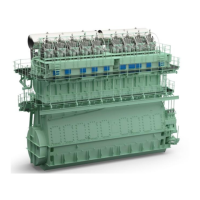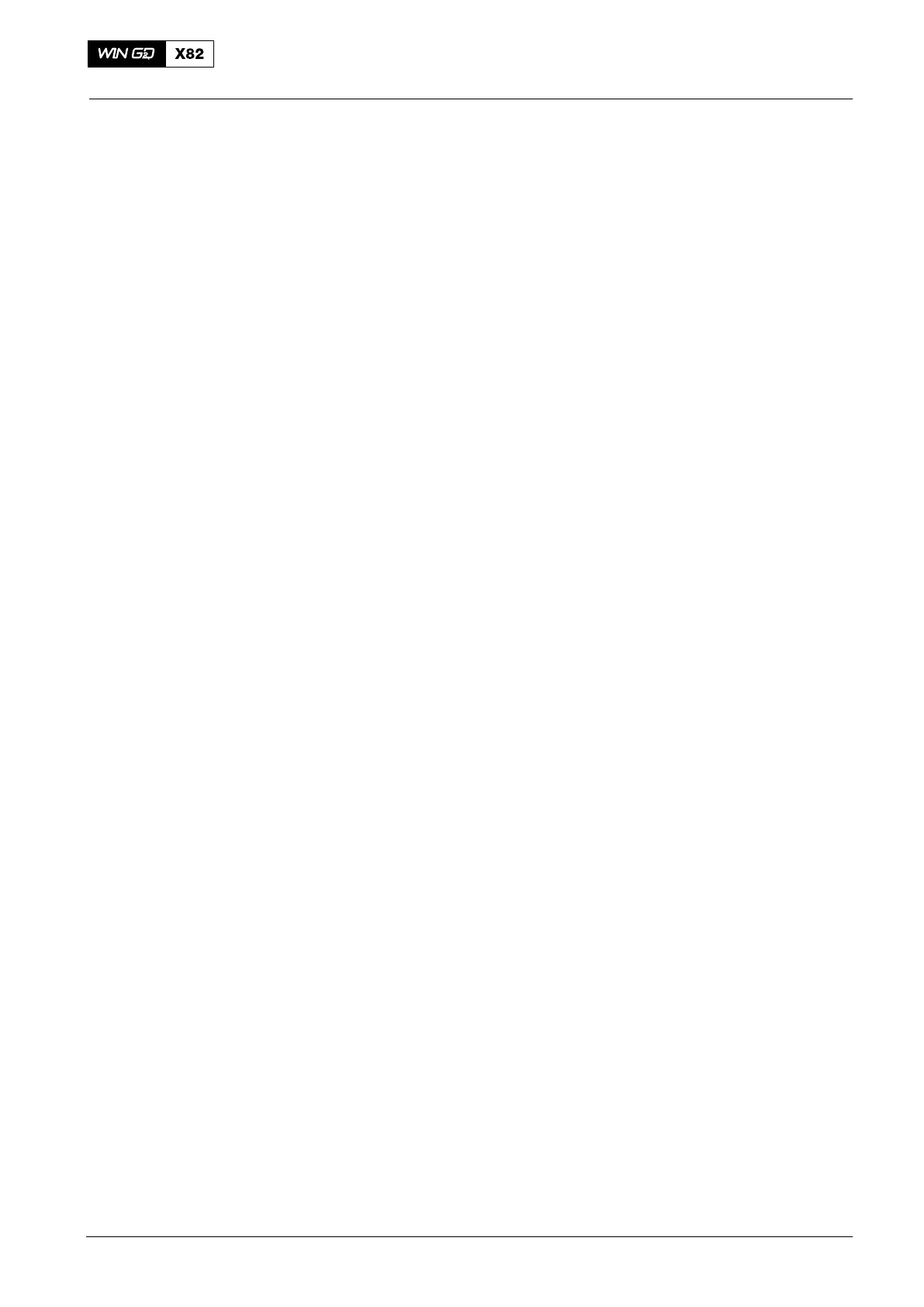Operation
2124−1/A1
Winterthur Gas & Diesel Ltd.
1/ 2
Cylinder Liner
1. General
The screws (12, Fig. 1) and holders (6) attach the cylinder liner (1) in the cylinder
jacket (4). The nuts of the elastic studs attach the cylinder cover (9) and cylinder
liner (1) with the upper and lower water guide jackets (2, 3) to the cylinder jacket (4).
The surfaces of the cylinder liner (1) and the cylinder jacket (4) make a metallic
seal MS. A non-hardening compound is applied around the surface of the metallic
seal MS to prevent leakage.
The insulating bandage (14) is attached to the cylinder liner to keep the wall
temperature of the mid-stroke area in the best range for operation.
An antipolishing ring (15) is installed in the top part of the cylinder liner. The
antipolishing ring removes coke contamination at the piston crown during operation.
2. Cooling
The cooling water flows through the cooling water inlet CI into the water space WS,
around the cylinder liner (1) and into the lower water guide jacket (3). The cooling
water flows through the pipe connections (7) and the connection pieces (8) into the
annular space AS. Then, the water flows through the bores CB and cools the cylinder
cover (9). The cooling water then flows through the exhaust valve cage.
Note: Automatic cooling water temperature control
.
The O-rings (13) are used to seal the water space WS and the annular space AS. If
water leaks you must replace the O-rings (13) as soon as possible.
To prevent unwanted tension in the top part of the cylinder liner (1), the temperature
of the cooling water must be in the permitted range. The maximum permitted
temperature ranges are:
D ±2_C at constant load
D ±4_C during load changes.
3. Lubrication
Cylinder lubricating oil flows to the running surface of the cylinder liner (1) through
eight lubricating quills (5). The lubricating grooves LG are milled around the
circumference of the cylinder liner and make sure that the lubricating oil is equally
supplied (see Lubricating Quill 2138−1).
The oil grooves OG decrease the back-flow from the scavenge ports. Oil between the
piston rings is collected in the oil grooves and stays on the surface of the cylinder
liner (1). This oil collection can decrease the lubricating oil supply rate.
For data about the pulse lubrication, see 7218−1.
2014

